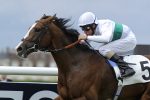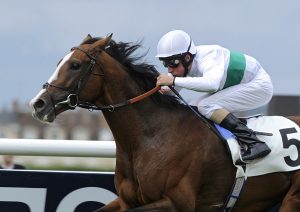The sadness of Camelot’s Derby victory is that, while it has enabled Montjeu to equal the record of having sired four victors of the world’s greatest race, this feat has been achieved posthumously, Montjeu having died two months ago aged only 16.
To have sired four Derby winners from only eight crops of three-year-olds is remarkable. This quick-fire run of success means that Montjeu has reached this total more quickly than did the stallion with whom he shares the record: the 1787 Derby winner Sir Peter Teazle, who was responsible for four Derby winners between 1798 and 1806.
Sir Peter Teazle himself was one of three Derby winners sired by another great stallion of yesteryear, Highflyer, who was responsible for three of the four Derby winners in the years 1786 to ’89. Additionally, daughters of Highflyer produced no fewer than five Derby winners, meaning that Highflyer and his son Sir Peter Teazle dominated the results of the early Derbys as markedly as did the famous Eclipse (responsible for three of the first five Derby winners and maternal grandsire of four, two of whom were sired by Sir Peter Teazle and one of whom was by Highflyer).
Highflyer and Eclipse, of course, never had the chance to contest the Derby as the race was not instituted until 1780, by which time Eclipse was aged 16 and Highflyer was aged six. Both, though, proved themselves champion racehorses before becoming dominant sires.
During the final quarter of the 18th century, Eclipse and Highflyer vied for recognition as the dominant stallion of the era. It is, therefore, a sobering thought that long-term their influences have proved to have been very different.
Nowadays, over 90% of thoroughbreds around the world descend in the male line from the Darley Arabian, one of the three founding fathers of the breed and the one who over the past century has turned out to be the most dominant. All current stallions tracing along the top line to the Darley Arabian do so via Eclipse, his great-great-grandson.
By contrast, Highflyer and his son Sir Peter Teazle are seemingly nowhere to be seen. There are, of course, thoroughbreds who have those two great sires somewhere in their pedigree, but none nowadays who do so in the male line. A son of the great stallion Herod (born in 1758), Highflyer was a great-great-great-grandson of the Byerley Turk – and the only Byerley Turk stallions at stud in the world today descend from another son of Herod: Woodpecker.
The most influential stallions from the Byerley Turk line in recent years were Ahonoora and his son Indian Ridge, while Indian Ridge’s son Compton Place can be regarded as the most successful representative of the line at stud in England today.
Arguably the most notable racehorse anywhere in the world this century from the line has been Australia’s dual Cox Plate winner Fields Of Omagh – who, unfortunately, cannot do anything to keep the line going as he is a gelding. Fields Of Omagh’s sire Rubiton was also a Cox Plate winner, while Rubiton’s sire and grandsire (Century and Better Boy, an Irish-bred son of the 1948 2,000 Guineas winner My Babu) rank as two of the most influential stallions in Australasian bloodstock history.




